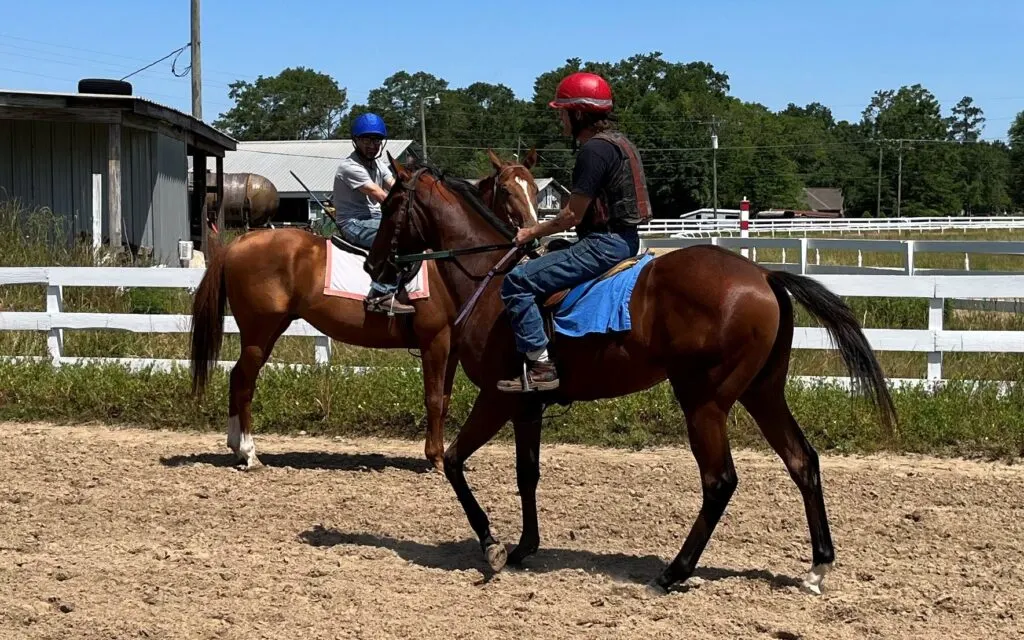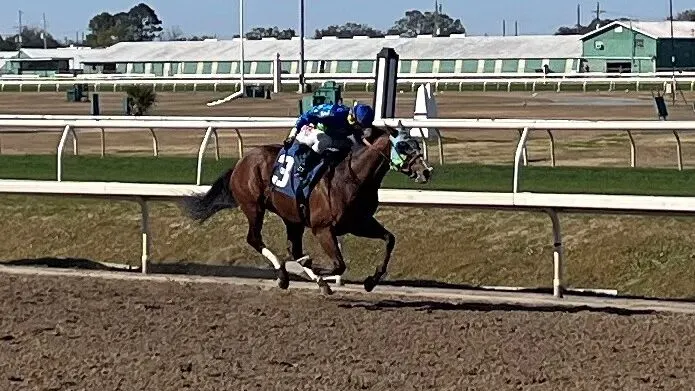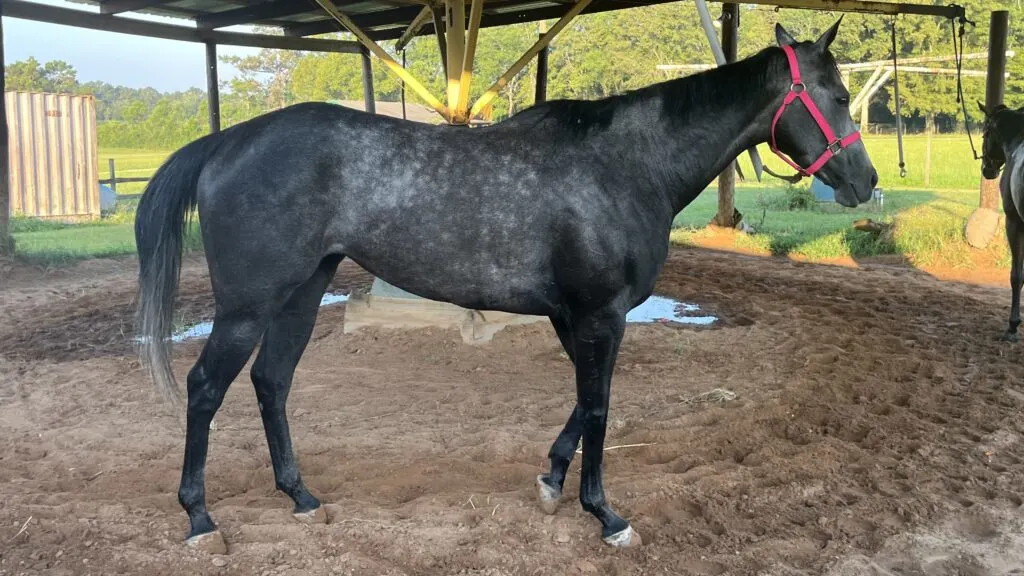Last updated: March 18, 2024
Did you know that racehorses can reach speeds of over 40 miles per hour, but at what cost? As a racehorse owner with over 25 years of experience in the horse racing industry and the author of two books about horses, I’ve witnessed firsthand the passion and dedication many have for these animals.
However, concerns about their welfare are growing. This article explores various industry practices, scrutinizing whether they cross the line into abuse. My goal is to shed light on the realities of horse racing, balancing the thrill of the sport with the ethical treatment of its stars.

Race Horse Practices Under Scrutiny
The welfare of racehorses is a complex issue, influenced by various practices within the industry. By examining training regimens, medication usage, living conditions, and the prevalence of injuries and fatalities, we can gain insights into the challenges they face.
Training Regimens
- Starting Age: Racehorses often begin their training at a young age, sometimes as early as two years old, which can put significant physical stress on their developing bodies.
- Frequency and Intensity: Training sessions can be intense and frequent, aiming to maximize speed and endurance. However, this can lead to overtraining and increased risk of injury.
- Veterinary Insights: Experts argue that while early training can prepare horses for the physical demands of racing, it’s crucial to balance with adequate rest and recovery to prevent long-term damage.
Use of Medication and Drugs
- Performance-Enhancing Drugs: Using substances to improve performance or mask pain allows horses to race under conditions they otherwise couldn’t, raising ethical and health concerns.
- Painkillers: While they can help manage pain, there’s a risk of horses being pushed beyond their limits, leading to severe injuries or exacerbating existing conditions.
- Research Findings: Studies highlight the potential for long-term health effects, including increased risk of injury and the possibility of developing drug dependencies.
Use of Medication and Drugs: A Case Study
- The Issue: Misuse of drugs to mask pain in racehorses, compromising welfare and integrity.
- Key Incident: Steve Asmussen, a renowned trainer, was fined $10,000 by the New York State Gaming Commission after a PETA investigation exposed the administration of drugs to injured horses to enhance performance.
- Outcome: The incident led to the proposal of new regulations aimed at better-protecting horse welfare, highlighting the need for strict oversight and ethical practices in the sport.
Living Conditions
- Stall Confinement: Many racehorses spend a significant amount of time confined to stalls, limiting their natural behaviors and social interactions.
- Impact on Welfare: Research suggests that such confinement can lead to stress, boredom, and the development of stereotypic behaviors, indicating poor mental health.
- Welfare Recommendations: Experts recommend providing opportunities for social interaction and free movement to improve overall well-being.
Racing Injuries and Fatalities
- Statistics: Data reveals a concerning number of injuries and fatalities on racetracks, with causes ranging from accidents during races to the exacerbation of pre-existing conditions.
- Contributing Factors: Track surface, racing frequency, and the physical demands of racing are significant contributors to these outcomes.
- Safety Measures: Implementing stricter safety protocols, regular veterinary checks, and track improvements are suggested to reduce these incidents.

Ethical Considerations in Horse Racing
Horse racing’s ethical landscape is shaped by debates on animal rights and the impact of public perception and activism. These discussions are pivotal in navigating the sport’s future, ensuring it respects tradition and evolving ethical standards.
Debate on Animal Rights
- Animal Rights Organizations: These groups argue against horse racing, citing concerns over exploitation and harm. They highlight the use of whips and the risk of injuries, advocating for reforms or questioning the sport’s ethical basis.
- Industry Defenders: The industry asserts that horse welfare is paramount, pointing to strict regulations, advancements in veterinary care, and programs for horses post-racing. They argue that ethical horse racing is achievable with the animals’ health and happiness as the priority.
- Balancing Views: The debate is nuanced, with some calling for improved conditions within the sport, while others challenge the ethics of using animals in competitive sports at all.
Here is an undercover YouTube video exposing the abuse of racehorses.
Public Perception and Activism
- Influence of Activism: Activists have brought significant attention to racehorse welfare, prompting the industry to adopt higher standards. Efforts include campaigns that have led to regulatory changes, such as stricter whip use limits and mandatory veterinary checks.
- Changing Public Perception: Media reports on welfare issues have influenced public views, leading to increased scrutiny and support for reforms. The industry faces growing pressure to demonstrate its commitment to horse welfare.
- Industry Response: In reaction to shifting sentiments, the racing sector has taken proactive steps to enhance its image and practices. Initiatives include setting welfare standards, promoting responsible breeding, and public outreach to highlight efforts in ensuring horse well-being.

The Nature of Horse Racing
Horse racing, often referred to as the “Sport of Kings,” has a rich history that spans centuries and continents. Its evolution from a pastime for the elite to a global sporting and economic powerhouse reflects its deep-rooted cultural significance and its impact on communities worldwide.
Horse racing dates back to ancient civilizations, with evidence of its practice in Egypt, Babylon, and Greece. It was not just a sport but a measure of social and political power. In the 18th century, horse racing began to take its modern form in England, with the establishment of standardized rules and the creation of major races like the St. Leger (1776), the Oaks (1779), and the Derby (1780).
From its British roots, horse racing spread across the globe, adapting to various cultures and leading to various racing forms, from flat racing to steeplechasing. While horse racing has undeniable historical and cultural significance, it is not immune to ethical concerns and debates.
In recent years, the treatment of racehorses, their living conditions, and their welfare have come under scrutiny. This article delves into these complex issues to explore whether certain industry practices amount to abuse and what the future holds for the sport.

Global Perspectives on Horse Racing
Exploring horse racing globally reveals diverse approaches to welfare, training, and regulation shaped by cultural, economic, and ethical considerations.
United States
- Regulations: Critiqued for inconsistent rules, the U.S. is moving towards uniform standards with the Horseracing Integrity and Safety Act (HISA).
- Welfare Initiatives: Focus on aftercare for retired racehorses, ensuring they have fulfilling lives post-racing.
United Kingdom
- Standards: Known for strict welfare standards, the British Horseracing Authority (BHA) oversees comprehensive care and training regulations.
- Transparency: Responds to public welfare concerns with increased openness and aftercare tracking.
Australia
- Reforms: Reacting to welfare issues, Australia has implemented reforms for better horse tracking and aftercare funding.
- Framework: State-based authorities are guided by national reforms like the National Horse Welfare Protocol to standardize care.
Japan
- Regulation: The Japan Racing Association (JRA) ensures thoroughbred racing meets high welfare standards, leading to fewer injuries.
- Welfare Investment: Significant funding in veterinary research and facilities supports horse health and safety.
United Arab Emirates (UAE)
- Heritage: Endurance racing reflects the UAE’s cultural heritage, with ongoing efforts to meet international welfare standards.
- Collaboration: Engages globally to adopt best practices and enhance veterinary care.

Case Studies in Horse Racing Welfare
Exploring the intersection of industry practices and welfare initiatives through case studies reveals the challenges and advancements in racehorse treatment.
The Breakdown Epidemic in the U.S.
- Background: High injury and fatality rates are linked to overbreeding and drug misuse.
- Impact: Media scrutiny and public outcry prompted regulatory reforms, including the Horseracing Integrity and Safety Act (HISA).
- Outcome: HISA aims to standardize safety and medication rules, improving welfare.
Aftercare in the UK
- Background: Initiatives like Retraining of Racehorses (RoR) support retired racehorses’ transition to new careers.
- Impact: Enhanced public perception and welfare outcomes, setting a global example.
- Outcome: The success of UK aftercare programs inspires international adoption of similar models.
The Melbourne Cup Tragedy
- Background: Repeated horse fatalities at Australia’s premier race sparked welfare debates.
- Impact: National calls for reform led to stricter safety and welfare standards.
- Outcome: Racing Victoria introduced measures to mitigate risks, improving horse safety.
Japan’s Equine Research and Training Center
- Background: Investment in equine science aims at injury prevention and safer training.
- Impact: Reduced injury rates demonstrate the value of research and care.
- Outcome: Promotes global knowledge exchange, benefiting racehorses worldwide.

Moving Forward: Enhancing Racehorse Welfare
The sustainability of horse racing is tied to its adaptability and innovation in the face of ethical challenges and public expectations. Here’s how the industry can progress:
Potential Reforms
- Uniform Regulations: Aim for global standards in racing rules to ensure horse welfare consistency.
- Veterinary Care: Boost on-site veterinary services and mandatory health checks to prevent injuries.
- Medication Limits: Enforce stricter rules on drug use to maintain natural racing conditions.
- Aftercare Programs: Develop comprehensive aftercare for retired racehorses, ensuring their well-being.
Technological Innovations
- Wearable Tech: Use devices to monitor horse health, aiding in injury prevention and care.
- Track Improvements: Innovate in track materials and design for safer racing environments.
- Data Analytics: Employ analytics to enhance understanding of injury causes and prevention.
Public Pressure and Behavior
Fans and the public are calling for transparency and ethical treatment, reshaping the industry. The digital amplification of these concerns underscores the need for proactive industry responses.
Ongoing Research and Dialogue
- Collaborative Research: Vital research into horse health and welfare can lead to significant reforms.
- Stakeholder Engagement: Dialogue among industry players and the public is essential for trust and ethical advancement.

FAQ Section
Why are racehorses euthanized when they break a leg
Racehorses are often euthanized after breaking a leg due to their complex bone structure and limited blood supply in the legs, which hinder healing. Given these challenges and the low success rate of treatment, euthanasia is considered the most humane option to prevent prolonged suffering.
What happens to racehorses after they retire?
Many retired racehorses are retrained for other disciplines, while others enjoy a peaceful retirement in sanctuaries. Efforts are increasing to ensure responsible aftercare for these animals.
Why do some racehorses have nosebleeds after a race?
Racehorses may experience nosebleeds after a race due to a condition known as Exercise-Induced Pulmonary Hemorrhage (EIPH). This happens when the small blood vessels in the lungs burst under the high pressure from intense physical exertion during racing.
What are the main ethical concerns in horse racing?
Ethical concerns in horse racing include the use of performance-enhancing drugs, the risk of injuries and fatalities, the welfare implications of training regimens, and the treatment of horses after their racing careers end.
Why is whipping used in horse racing?
Whipping is traditionally used by jockeys as a means to encourage horses to run faster or correct their course during a race. It’s intended as a tool for persuasion and control rather than punishment.
What are the ethical concerns regarding whipping racehorses?
Ethical concerns about whipping include potential pain and distress caused to the horses, the risk of injury from excessive use, and the broader question of whether it’s humane to use physical force to enhance performance.

Conclusion: Are Racehorses Abused?
The exploration of horse racing, from its historical roots to modern-day challenges and innovations, reveals a sport of complexity and contrast. At its heart, horse racing captivates with its blend of speed, competition, and the deep bonds between humans and horses.
Yet, the ethical treatment of these equine athletes has emerged as a paramount concern, reflecting broader societal shifts towards animal welfare and ethical entertainment. The key findings underscore the need for a delicate balance between preserving the thrill of the sport and ensuring the humane treatment of racehorses.
Practices under scrutiny, such as training regimens, medication use, and living conditions, highlight areas where the industry must evolve. The global perspectives on horse racing illustrate a tapestry of approaches to welfare and regulation, offering lessons and opportunities for cross-border learning and improvement.
As we look to the future, the question arises: How can the horse racing industry innovate and reform to safeguard the welfare of its stars while maintaining the sport’s excitement and allure?

Calls to Action: Supporting Ethical Horse Racing
The path forward requires the engagement and commitment of all stakeholders—industry professionals, fans, and advocates alike—to champion ethical practices and horse welfare. Here are ways you can contribute to positive change within the sport:
- Educate Yourself and Others: Learn about the welfare issues facing racehorses and share this knowledge within your community. Awareness is the first step toward change.
- Support Welfare Initiatives: Engage with and support races and organizations that prioritize horse welfare, such as those implementing stringent safety measures and aftercare programs.
- Advocate for Change: Voice your support for reforms and technological innovations aimed at improving horse welfare. Public pressure can drive regulatory changes and industry shifts.
- Contribute to Aftercare Programs: Consider donating to or volunteering with organizations dedicated to the care and retirement of racehorses. Your support can help ensure a quality life for horses after their racing careers.
Reputable Organizations to Support:
- Retraining of Racehorses (RoR): www.ror.org.uk
- Thoroughbred Aftercare Alliance (TAA): www.thoroughbredaftercare.org
- The Jockey Club’s Thoroughbred Incentive Program (T.I.P.): tjctip.com
By supporting ethical practices and advocating for the welfare of racehorses, fans and stakeholders can help ensure that the sport of horse racing thrives as a spectacle of beauty and athleticism that honors the dignity of its equine stars.
References and Citations
- Jockey Club.
- Equine Injury Database – International Federation of Horseracing Authorities.
- Thanks to PETA Probe, Horses Used in N.Y. Racing Have More Protections: People for the Ethical Treatment of Animals
- U.S. Regulations concerning the Treatment of Horses. The Horseracing Integrity Act
- How to Recognize Signs of Horse Abuse: What is Horse Abuse
Stay Connected and Informed:
- If you found this guide helpful, consider signing up for our newsletter for more insights and horse updates.
- For personalized advice or specific inquiries, feel free to contact me directly. I’m here to help.
